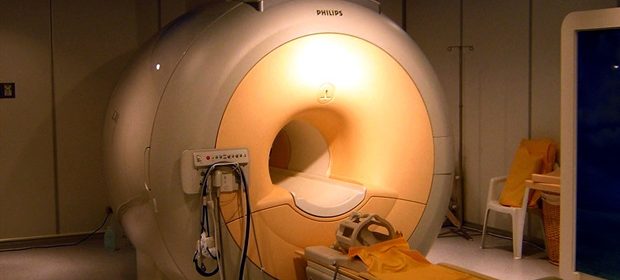What is Neuropsychopharmacology?

Neuropsychopharmacology is a science that examines the effects of drugs on the mind. It combines neuroscience with the science of psychopharmacology, a way of understanding how different drugs impact people’s behavior. It is a new branch of scientific research following on from the significant development around psychopharmacology in the 1950s.
Objectives of the science
Scientists hope that through neuropsychopharmacology they will be able to find medicines that can help patients to have a better quality of life. It is hoped that this will then significantly impact society to reduce the economic burden on the world’s healthcare systems, which are currently unable to meet the medical needs of many mental health patients. As well as the development of more targeted medicines, neuropsychopharmacology hopes to assist in better diagnostic tools and other therapies for mental health.
The premise of the science is that all human thought processes in the mind, both ones that are associated with mental health issues and normal thoughts, have an origin in neuro-chemical reactions. Scientists also hope to provide more insight into how people learn and how they develop memories. Research hopes to pinpoint the circuit pathways that represent certain states of mind.
Diseases studied through neuropsychopharmacology
Psychopharmacology has helped in the development of drugs that treat various types of mental health conditions, such as psychotic disorders (e.g. schizophrenia), sleep disorders, eating disorders, anxiety disorders and mood disorders (e.g. bipolar disorder). Neuropsychopharmacology further expands on this by considering the neuropathology, pharmacodynamics, consciousness and levels of mental illness of patients.
What the scientists study
Researchers in the field are trying to develop specific drugs that work on particular receptors for specific type of communications. The aim is to come up with very targeted medicines with high efficacy and low risk of side effects.
The research involves a close study of neurotransmission, the chemical and electrical signals created when a cell is triggered to communicate with neurons in a thought process. Scientists are examining the role of enzymes, ligands and proteins for some of the main neurotransmitters, such as glutamate, GABA and dopamine. Also the mechanisms for the voltage of transmissions are being explored and the effect of enzymes on neurotransmitters.
Scientists are also also trying to isolate particular circuits and their location in the brain so that they can link them to specific illnesses. This will enable them to identify which receptors, chemicals and neurotransmitters in a particular area are involved in a specific thought process.
More insight can also be gained from drugs that are already being used to treat mental health disorders such as selective serotonin reuptake inhibitors which block serotonin or anti-anxiety agents. Pharmaceutical companies are using them as the basis for further research into compounds that are receptor specific.
Different types of equipment used
Neuropsychopharmacologists use different types of equipment to gain information about brain activity to help with research:
Functional Magnetic Resonance Imaging – this equipment helps researchers to study the activity of the brain by considering the blood oxygenation and flow. Heightened activity in an area of the brain is revealed by increased usage of oxygen. Hemoglobin in the blood is diamagnetic when it is oxygenated and paramagnetic when deoxygenated. The equipment comprises a powerful magnetic, which is able to pick up changes.
Positron Emission Tomography (PET) – researchers can use PET scans to show the function of different organs or tissues. The equipment has the ability to show changes at a cellular level. Detectors pick up the amount of radiation being emitted. This information can then be used to produce a scan. The technique requires a radioactive tracer, which accumulates in areas of high activity.
Single-Photon Emission Computed Tomography (SPECT) – this is a type of nuclear imaging technique, which is used to provide insight into how the brain is working through blood flow in a particular region. It gives guidance on neuronal activity levels.
References
- Omics International on neuropsychopharmacology: http://research.omicsgroup.org/index.php/Neuropsychopharmacology
- IUPHAR on neuropsychopharmacology: http://www.iuphar.org/index.php/sections-subcoms/neuropsychopharmacology
- Psych Central on Functional Magnetic Resonance Imaging: http://psychcentral.com/lib/what-is-functional-magnetic-resonance-imaging-fmri/
- Mayo Clinic on PET: http://www.mayoclinic.org/tests-procedures/pet-scan/basics/definition/prc-20014301
- Mayo Clinic on SPECT: http://www.mayoclinic.org/tests-procedures/spect-scan/basics/definition/prc-20020674
- Neuropsychopharmacology Journal, Impact of stress on the brain: http://www.nature.com/npp/journal/v41/n1/full/npp2015306a.html
Further Reading
- All Pharmacology Content
- Pharmacology
- What is Drug Absorption?
- Drug Distribution
- Drug Excretion / Elimination
Last Updated: Aug 23, 2018

Written by
Deborah Fields
Deborah holds a B.Sc. degree in Chemistry from the University of Birmingham and a Postgraduate Diploma in Journalism qualification from Cardiff University. She enjoys writing about the latest innovations. Previously she has worked as an editor of scientific patent information, an education journalist and in communications for innovative healthcare, pharmaceutical and technology organisations. She also loves books and has run a book group for several years. Her enjoyment of fiction extends to writing her own stories for pleasure.
Source: Read Full Article